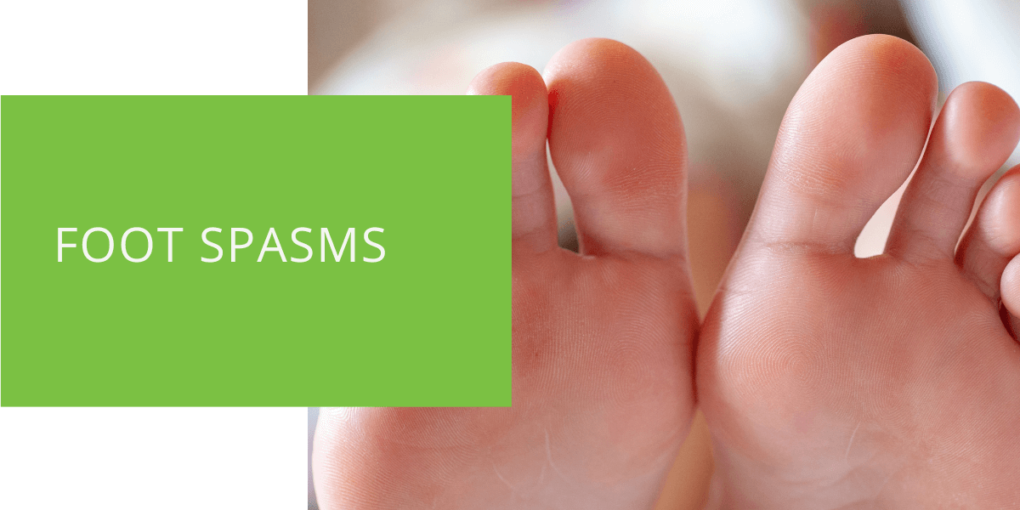Understanding Foot Spasms
Foot spasms, often mistaken for simple foot cramps, can be quite a nuisance. These involuntary muscle contractions can strike unexpectedly and cause discomfort or pain. At ePodiatrists, we believe it's crucial to comprehend the causes, treatment options, and preventive measures for foot spasms. In this comprehensive guide, we'll delve into this issue, providing you with valuable insights and expert advice.
Key Takeaways
- Foot spasms, often called foot cramps, are involuntary muscle contractions that can cause discomfort and disrupt daily activities.
- Common causes include muscle fatigue, nerve irritation, dehydration, and improper footwear.
- Effective prevention and treatment strategies include stretching exercises, proper hydration, and seeking professional guidance from podiatrists at ePodiatrists.
What are Foot Spasms?
Foot spasms are sudden, involuntary muscle contractions in various areas of the foot. They are often referred to as foot cramps but have distinct characteristics. Unlike a mild cramp that might resolve with a simple stretch, foot spasms can be more intense and persistent.
These spasms can affect the muscles and nerves in your feet, causing discomfort and interrupting your daily activities. Understanding the underlying causes is essential to finding effective treatment and preventing future occurrences.
Causes of Foot Spasms
Muscular Factors
Muscle-related issues are among the primary culprits behind foot spasms. Overuse and fatigue of the foot muscles can lead to cramps or spasms. When muscles become tired or imbalanced, they are more susceptible to sudden contractions. Stretching exercises and proper arch support can help alleviate this.
Nerve Irritation
Nerve damage or irritation can also trigger foot spasms. Pinched nerves in the foot can disrupt normal muscle function, leading to involuntary contractions. Neuropathy, often associated with conditions like diabetes, can increase the risk of foot spasms.
Dehydration and Electrolyte Imbalance
Dehydration and electrolyte imbalances, particularly low potassium or magnesium levels, are common causes of muscle cramps and spasms. When your body lacks these essential minerals, your muscles may contract involuntarily. Ensuring proper hydration and a balanced diet can help prevent these issues.
Footwear and Biomechanical Factors
The shoes you wear and your foot's biomechanics play a significant role in foot health. Ill-fitting shoes with inadequate arch support can contribute to muscle tension and cramping. Biomechanical issues like flat feet can also increase the risk of foot spasms.

Treatment for Foot Spasms
When foot spasms strike, relief is a top priority. Here are some treatment options to consider:
Self-Care Measures
- Stretching Exercises: Gentle stretching can help relieve muscle tension. Try calf stretches and toe-pointing exercises.
- Hydration: Ensure you're adequately hydrated. Dehydration can lead to muscle cramps.
- Dietary Adjustments: Consume potassium and magnesium-rich foods like bananas, oranges, and nuts to maintain proper electrolyte balance.
Medical Attention
If foot spasms persist or become a recurring issue, it's essential to seek professional help from a podiatrist. They can:
- Diagnosing the Underlying Cause: A podiatrist can determine if nerve damage, biomechanical problems, or other factors contribute to your foot spasms.
- Recommend Treatment: Based on their assessment, they may suggest treatments like physical therapy, custom orthotics, or medications to alleviate symptoms and prevent future spasms.
Foot Care and Prevention
Preventing foot spasms involves lifestyle changes and proactive foot care. Here are some steps you can take:
Arch Support and Proper Footwear
- Choose Supportive Shoes: Opt for shoes with proper arch support and cushioning. Your podiatrist can recommend suitable footwear for your specific needs.
- Custom Orthotics: If you have biomechanical issues, custom orthotics can provide the necessary support to reduce the risk of foot spasms.
Stretching and Strengthening Exercises
- Regular Stretching: Incorporate stretching exercises into your daily routine to maintain muscle flexibility and prevent spasms.
- Strength-Building: Strengthening exercises for your feet and calves can help improve muscle balance and reduce the likelihood of cramps.
Lifestyle Modifications
- Maintain a Healthy Weight: Obesity can increase the strain on your feet and exacerbate muscle issues. Maintain a healthy weight to reduce the risk.
- Manage Chronic Conditions: If you have conditions like diabetes, work closely with your healthcare team to manage them effectively.
Conclusion
Understanding the causes of foot spasms is crucial for effective treatment and prevention. At ePodiatrists, our experienced podiatrists help you overcome foot spasms and maintain optimal foot health. Don't let these spasms disrupt your life; take action today!
If you're experiencing persistent foot spasms or seeking expert guidance on foot care, schedule an appointment with ePodiatrists. Our team of specialists is dedicated to providing personalized solutions to keep your feet healthy and pain-free. Don't let foot spasms cramp your style—contact us now for the care you deserve.

